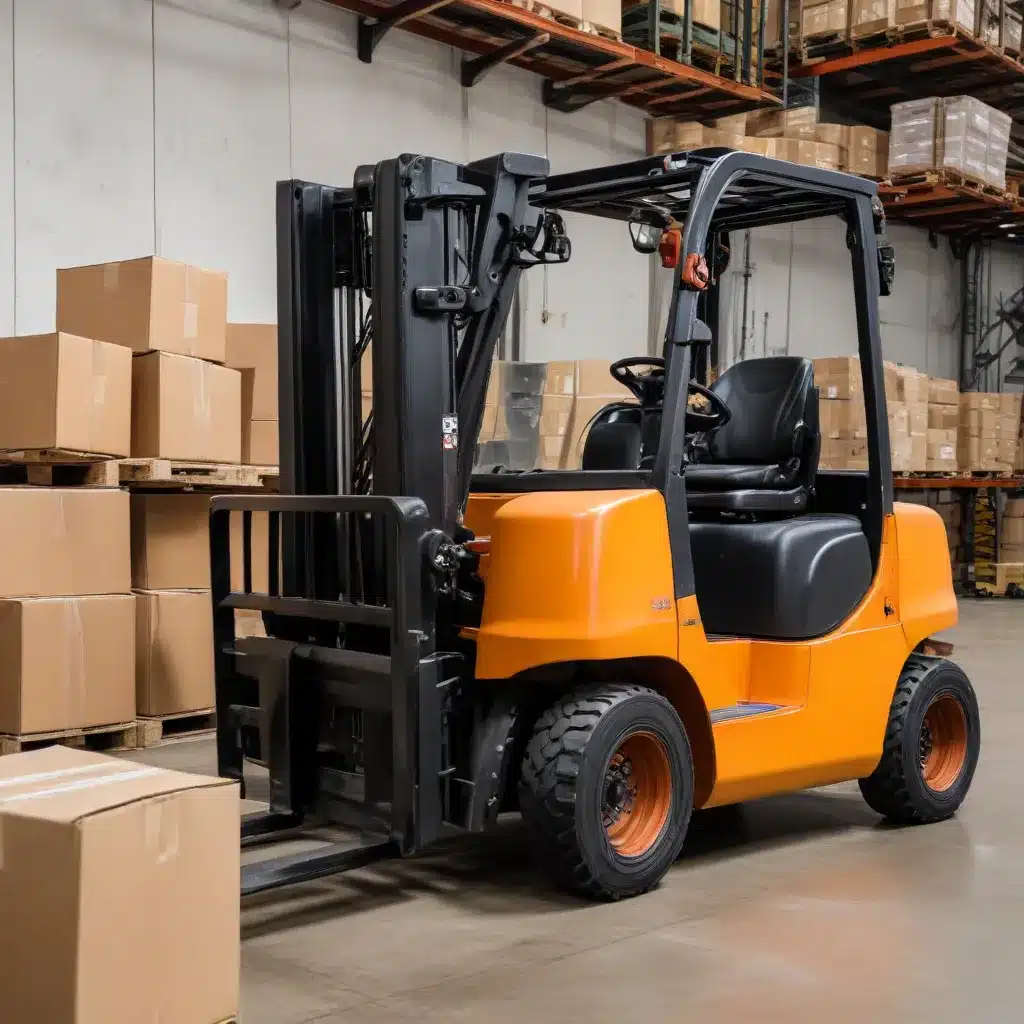
Understanding the Forklift Acquisition Landscape
When it comes to forklift fleets, food and beverage manufacturers face a critical decision: should they lease or buy their equipment? This choice can significantly impact a business’s operational efficiency, maintenance costs, and overall financial strategy. As an experienced industry expert, I’m here to provide in-depth insights to help you navigate this complex forklift acquisition dilemma.
Forklift Leasing: Flexibility and Predictable Costs
Leasing forklifts offers several distinct advantages for food and beverage manufacturers. Flexibility is a key benefit, as leases typically allow businesses to upgrade or replace equipment more frequently to keep pace with evolving operational needs and technological advancements. This can be particularly valuable in fast-paced industries where production demands and warehouse layouts are constantly in flux.
Additionally, leasing provides more predictable costs compared to outright purchases. Monthly lease payments are fixed, making it easier to budget and forecast expenses. This financial predictability can be especially beneficial for food and beverage companies that operate on tight profit margins and need to closely monitor their cash flow.
Forklift Ownership: Long-Term Cost Savings and Asset Control
On the other hand, purchasing forklifts outright can offer substantial long-term cost savings for some businesses. Over the lifespan of the equipment, the total ownership costs may be lower than the cumulative lease payments. This is particularly true for food and beverage manufacturers that anticipate keeping their forklifts for an extended period, often five years or more.
Owning the equipment also grants businesses greater control over their assets, allowing them to customize, maintain, and dispose of the forklifts as they see fit. This can be advantageous for companies with specific operational requirements or a desire to maintain a consistent fleet composition.
Evaluating the Unique Needs of Food and Beverage Manufacturers
When deciding between leasing and buying forklifts, food and beverage manufacturers must carefully consider their unique operational and financial requirements. Some key factors to evaluate include:
Warehouse Environment and Material Handling Needs
Food and beverage facilities often have specialized handling requirements, such as the need for temperature-controlled environments, hygienic equipment, or the ability to navigate tight aisles and navigate around production lines. Leasing may be the preferred option for businesses that anticipate frequent changes to their warehouse layout or material handling needs, as it allows for more flexibility in upgrading or replacing equipment.
Forklift Utilization and Lifespan
The intensity of forklift usage and the expected lifespan of the equipment can also inform the leasing vs. buying decision. Companies with high-intensity, multi-shift operations may find that leasing allows them to more easily manage maintenance and avoid the costs of repairing aging equipment. In contrast, businesses with lower utilization rates or the ability to keep forklifts for an extended period may benefit more from the long-term cost savings of ownership.
Financial Considerations and Tax Implications
Carefully analyzing the financial implications of each option is crucial. Leasing often requires lower upfront capital investment but may result in higher overall costs over time. Purchasing forklifts, on the other hand, can provide tax advantages through depreciation deductions, but it also requires a more substantial initial outlay. Food and beverage manufacturers should consult with their financial advisors to determine the most advantageous approach based on their specific circumstances.
Strategies for Optimizing Forklift Acquisition
Regardless of whether a food or beverage manufacturer decides to lease or buy their forklifts, there are several strategies that can help optimize the acquisition process and maximize the benefits:
Conducting thorough market research
Staying up-to-date on the latest forklift models, features, and pricing trends is essential. Regularly review forkliftreviews.com to explore the latest industry innovations and compare specifications across different brands and classes of equipment.
Negotiating favorable terms
When leasing, work closely with providers to negotiate the most competitive rates, flexible contract terms, and favorable options for upgrades or early termination. For purchases, leverage your buying power to secure discounts, extended warranties, or customized service agreements.
Implementing a comprehensive maintenance plan
Regardless of ownership, develop a proactive maintenance program to ensure optimal performance and longevity of your forklift fleet. This may involve a combination of in-house technicians, scheduled inspections, and strategic partnerships with authorized service providers.
Considering alternative acquisition models
Explore innovative models like forklift rentals or fleet management services, which can provide the benefits of leasing without the long-term commitment. These options may be particularly well-suited for food and beverage manufacturers with highly variable or seasonal material handling needs.
Staying agile and adaptable
Monitor industry trends, technological advancements, and your own evolving operational requirements. Regularly reassess your forklift acquisition strategy to ensure it remains aligned with your business goals and the changing landscape of the food and beverage manufacturing sector.
Conclusion
The decision to lease or buy forklifts for a food or beverage manufacturing operation is a complex one, requiring a careful balance of operational considerations, financial implications, and long-term strategic planning. By carefully evaluating your unique needs, leveraging industry insights, and exploring innovative acquisition models, you can position your business for success and maximize the value of your forklift fleet. Remember to stay informed, negotiate favorable terms, and maintain a proactive approach to forklift management – these strategies will be crucial in navigating the leasing vs. buying dilemma and driving operational excellence in your food or beverage manufacturing facility.

